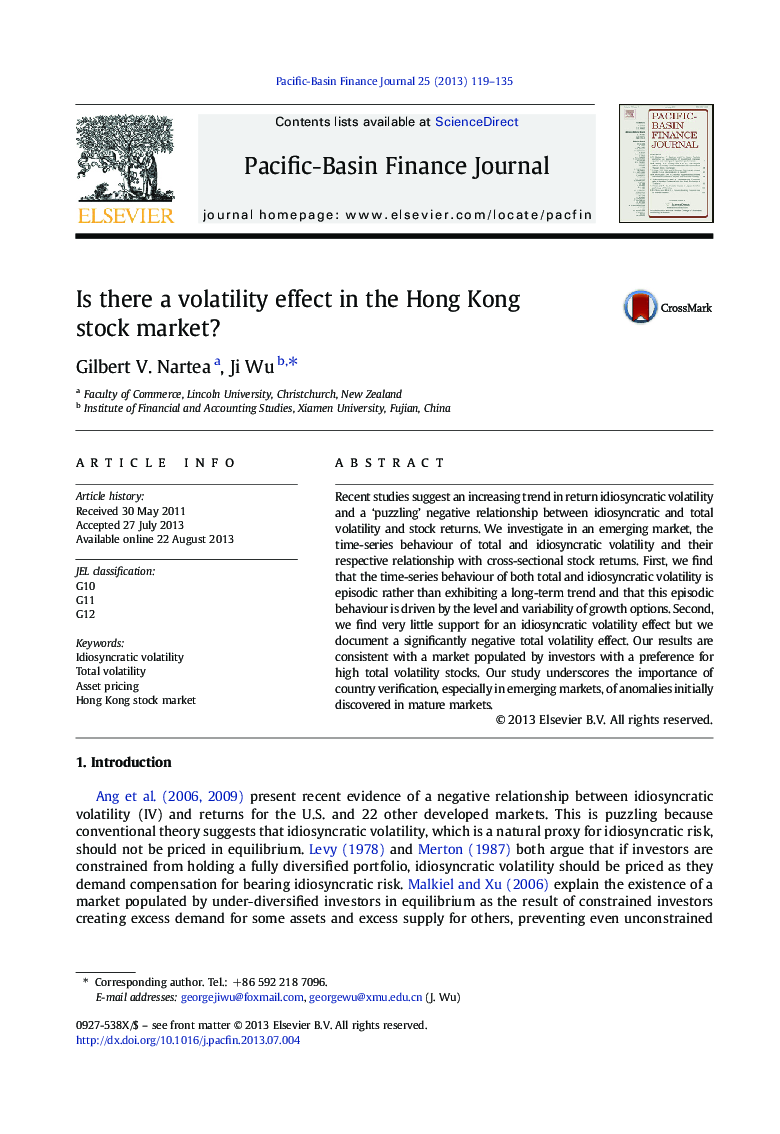| Article ID | Journal | Published Year | Pages | File Type |
|---|---|---|---|---|
| 975406 | Pacific-Basin Finance Journal | 2013 | 17 Pages |
•Episodic behaviour of total and idiosyncratic volatility driven by growth options•No idiosyncratic volatility effect but negative total volatility effect•Implies investor preference for highly volatile stocks•Importance of country verification of anomalies discovered in mature markets
Recent studies suggest an increasing trend in return idiosyncratic volatility and a ‘puzzling’ negative relationship between idiosyncratic and total volatility and stock returns. We investigate in an emerging market, the time-series behaviour of total and idiosyncratic volatility and their respective relationship with cross-sectional stock returns. First, we find that the time-series behaviour of both total and idiosyncratic volatility is episodic rather than exhibiting a long-term trend and that this episodic behaviour is driven by the level and variability of growth options. Second, we find very little support for an idiosyncratic volatility effect but we document a significantly negative total volatility effect. Our results are consistent with a market populated by investors with a preference for high total volatility stocks. Our study underscores the importance of country verification, especially in emerging markets, of anomalies initially discovered in mature markets.
